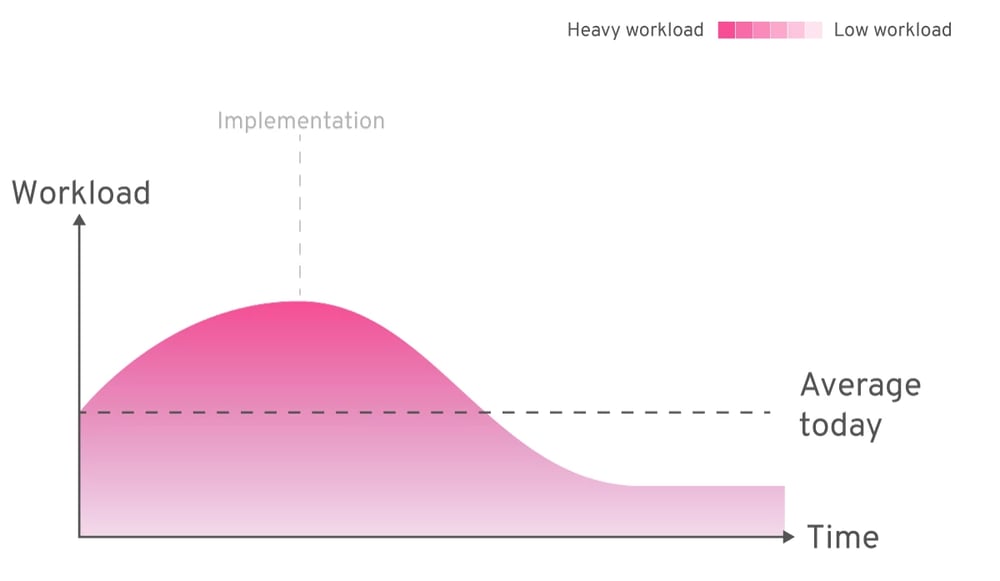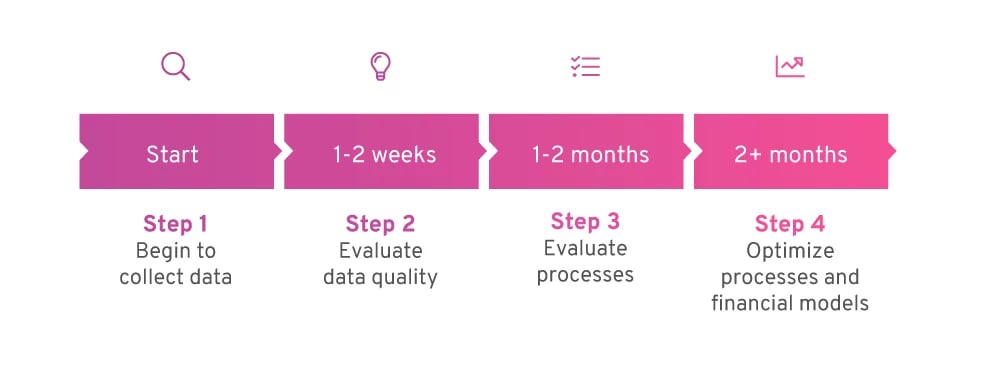How to get well on your way to powerful processes
8 min read
Time tracking
Build your perfect data foundation for spotless invoicing and deep business insights with easy time tracking.
Project management
Be a world champion project manager. Keep your projects on track - and profitable.
Resource management
Efficiently staff projects and run a predictable business with confidence.
Insights & Reporting
Get smarter - faster - to make clever decisions for long-term growth impact.
Project accounting & Invoicing
Invoice everything - fast and accurate - while staying on top of project finances.
Staff & Salary
Give accountants and HR an intelligent tool to eliminate draining administration.
Financial Systems
TimeLog offers standard integrations for all your favourite financial systems. Save time and reduce manual tasks.
Payroll Solutions
TimeLog offers standard integrations for multiple payroll solutions. Get easy salary administration and only enter payroll information once.
Add-ons
Track time automatically via Outlook, use gamification or find another add-on that can support your business.
Multiple Legal Entities
You can create synergy between your departments and across borders and offices with the Multiple Legal Entities module from TimeLog.
Business Intelligence
Utilise the insights you get from TimeLog to the fullest. Our system is ready to integrate with multiple BI solutions.
Partner Integrations
TimeLog PSA is part of a large ecosystem. Get an overview of all the partner integrations in the TimeLog family.
Economy department
Save 1-2 days a month on your invoicing process.
Project teams
From planning to execution and evaluation. Robust tools for every project manager.
Management teams
Create a performance-driven culture with solid reporting capabilities.
Large enterprises
Enhance operations and performance across entities, countries and departments.
NGOs and non-profit organisations
Simplify internal processes, spend less time on administration, and get documentation in place - at a discounted rate.
Blog
Get inspired to run an even better business with articles, guides and analyses.
Guides, podcasts and webinars
Get access to templates, guides and webinars that help and inspire you.
Help Center
Looking for help material and user guides to the TimeLog system? Look no further. Find all the help you need now.
Get a single source of truth
Discover how companies maintain a single source of truth across borders, departments, and currencies.
Get integrated
Discover the advantages customers gain from utilising our integrations and API.
Reporting in real-time
Explore how others leverage reporting to optimise their processes and make informed decisions.
Get started with resource planning
Discover how other companies thoroughly grasp their resources and enhance their ability to predict future trends.
Improved project financials
This is how the efficient financial toolbox from TimeLog helps project managers and CFOs improve their project financials.
Faster invoicing
Discover how other companies have slashed the time spent on invoicing by 75% - and uncover how you can achieve the same efficiency.
The Story of TimeLog
Get insights on TimeLog and how we can help you grow and evolve your business.
Employees
See who shows up every day to deliver the best PSA solution.
Career
What's life like at TimeLog? Are we hiring? Get the answer here.
Partner
Create even more value for your customers, as well as ours, as a TimeLog Partner.
Premium Service
Online Help Center, tailored onboarding and support from Day 1.
Corporate Social Responsibility
We work to ensure a positive impact on planet, people and businesses.
Security and GDPR
Learn more about how we work to keep your data safe and provide maximum security.
4 min read
In the EU, 99 percent of all business are SMEs and experts say they need to boost digitalisation. But how exactly?

If you want to drive growth, enhance productivity and increase profitability in SMEs digital B2B platforms, digitalisation of business processes and data-driven business models are essential, according to the report, Big data and B2B digital platforms: The next frontier for Europe's industry and enterprises.
If you ask experts, enthusiasts and evangelists, you need to set in full force towards digitalisation - regardless if you are a 10, 30 or 200 man company.
In other words - your company holds a huge (digital) potential, which just waits to be released.
You already have a website, CRM, mail and a lot of other IT systems. What more would you need to digitalise to get ahead of competitors?
Maybe you're right to doubt the experts and profets. When it comes to digitalisation, it requires preparatory work, a strategy and not least time, before you see the effects.

In TimeLog, we help companies implement business systems to among others time registration and invoicing. Because we have more than 18 years of experience, we know how you best get started with digitalisation of business processes, and which pros and cons you may experience along the way.
In this article, we share what you need to take into account and what you need to do to be successful.
Digitalisation of work processes is not about (as we often hear) energising existing work processes.
The truth is that existing processes in most of the companies are based on (semi-bad) habits developed over the years.
They work, but only because people manage them. And people are flexible. IT systems, on the other hand, are not. This is why we cannot translate analogue processes to digital solutions one to one.
Instead of thinking digitalisation as a way to retain your existing processes, see an IT purchase as an opportunity to optimise the company’s work processes.
It may take longer, but it is an investment where you get a tenfold return.
So far, so good. ”But what is the first step, when we need to optimise work processes in an SME?”, you ask.
If you would like to optimise your work processes, the first step is to map them.
Involve a few employees to ensure you get thorough insights into the processes and tasks, typically part of your company's projects.
Even though the company’s projects are different, you can sum up and group work processes and specific tasks linked to a project, e.g. analysis, research, project management and graphical design.

Larger IT projects or purchases often start with us realising we have a problem. For TimeLog’s customers, this can be an acknowledgement of the following:
And they are good points of departure. But for larger IT projects, you need to make sure you have planned time to move from problem to potential, from tactics to strategy.
The target is crucial when it comes to implementing IT systems and digitalisation of work processes.
Because with IT systems, you get the advantage of automation, but you compromise on flexibility (you know, the part about people >< machines you read about earlier).
This, in most cases, means that you need to know what you would like to know (or gain) to set up the system correctly.
If we take TimeLog as an example, the system's core is the single-time registrations and expenses. They are gathered in projects. Each time, registration is linked to an employee and a task on a project. Projects form the basis of your invoicing, resource and project management and reports and analyses.
This means that the data you collect and the answers or data you can extract from the system are generated based on the system setup.
So when you would like to know if your company:
You must define the system's target before it is set up.
It is easy to get carried away by the digitalisation atmosphere. Success stories of companies’ use of big data, small data and digital transformation sometimes paint a picture of everything needing to be digitised, and the more data you collect, the better.
However, a successful IT implementation is often limited in the beginning. And it 100% requires that the employees are on board.
This means that when the system is purchased and presented, you have made 50% progress.
Now, employees need to be convinced, move away from old habits and get used to new work processes.
If we again take time registration as an example, a timeline for an introduction period could look like this:
Start with a simple framework for time registration, e.g. the department’s five primary tasks, two larger projects or something similar to get data into the system

This short answer is: Yes... when you know what you are doing and have thought through processes, targets and the organisation.
Digitalisation should not be a target in itself. If you have not done your preparatory work and mapped out and optimised your work processes, you will often experience digitised work processes as a blocker instead of an advantage – and your profit will be limited.
 Read more
Read more

62 min read
 Read more
Read more
 Read more
Read more
 Read more
Read more

5 min read